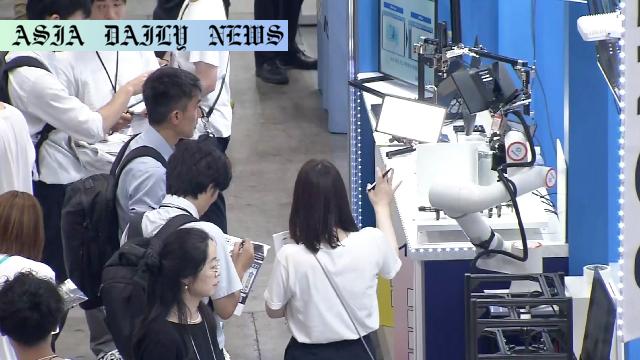Tariffs are imposing significant challenges for Japanese manufacturers, leading to worsening business forecasts and shrinking profits.
The implementation of tariffs by the Trump administration has caused challenges for Japanese manufacturers.
Many companies report a decline in profits and a worsening business outlook due to high tariff percentages.
Tariff costs have forced companies to increase prices, but with limited success in recovering profits.

The Economic Toll of New Tariffs
The manufacturing sector in Japan is struggling under the weight of new tariffs imposed by the U.S. administration, particularly under the leadership of President Donald Trump. These protectionist measures have created a hostile trading environment that has rendered exports less competitive and squeezed profitability. For many Japanese firms, this has meant revising production schedules, halting investments, and anticipating reduced demand from key markets like the United States. The Trump administration’s tariffs, ranging from a 10% to an impending 25% on certain imports, are posing serious challenges that reverberate beyond strict financial losses. Business owners are not only concerned about the current impact but are also forecasting long-term repercussions that could shrink their market shares and hinder growth opportunities across borders.
Manufacturing World Tokyo: A Snapshot of Uncertainty
At the Manufacturing World Tokyo trade show held in Chiba Prefecture, the sentiment among participants is less than optimistic. The event, known to attract over 1,800 companies showcasing their capabilities, highlighted the increasing strain within the sector. For instance, an eyeglass frame manufacturer from Fukui Prefecture shared anecdotes about a U.S.-based client rethinking its production strategies since a universal 10% tariff was introduced in April. The executive shared that the company may face diminished demand, signaling a worrying trend for others tied to the U.S. export market. Similarly, parts manufacturers in central Japan are reporting bleak situations. Selling essential components, including screws for the U.S. chip-making industry, has become less lucrative due to the 50% levies on imported steel and aluminum. This dual challenge of absorbing costs while straining to recoup them through price increases has left manufacturers with a limited margin for survival.
Uncertain Futures and Strategic Adjustments
With a 25% tariff increase on the horizon starting August 1, Japan’s manufacturers are left grappling with difficult decisions. Companies are either moving operations abroad or considering pulling back on investments. Many firms have noted that while some part of the tariff increases can be passed onto their customers as price hikes, the extent to which they can do so is limited. This limitation stems from fears of losing clients or making their products unattractive in the global market. For instance, the eyeglass frame maker and the Gifu-based parts manufacturer have both signaled an inability to absorb more costs without seeing detrimental effects on revenue. The prolonged trade war and protectionist policies in the U.S. could potentially deter innovation and strain Japan’s economic growth. Even with domestic efforts to diversify export markets, the shadow of these tariffs looms large over Japan’s attempt at revitalizing its manufacturing sector to pre-tariff levels.
Global Implications of U.S.-Led Tariffs
On a global level, the tariff war instigated by the United States propagates a dangerous precedent. Nations relying heavily on exports must now navigate an unpredictable geopolitical landscape. Japan, as one of the leading manufacturing hubs, faces an amplified risk because many of its products rely on trade partnerships built over decades. A rollback of current tariffs seems unlikely under the ongoing administration, and manufacturers are bracing for competitive disadvantages. The struggle to address these concerns reflects the broader tensions in the international trade ecosystem, with developing economies and manufacturing giants like Japan facing the harsh realities of protectionist policies that hinder the principles of free trade. This situation underscores the urgent need for renegotiations and bilateral discussions to provide some respite to affected economies while fostering a more collaborative global trade environment.
Commentary
Overview of the Trade War’s Economic Repercussions
The economic landscape has shifted sharply in recent years due to the onset of protectionist policies between global trade partners. For a country like Japan, known for its high-quality manufacturing and advanced technology, such policies are especially damaging. Tariffs, responsible for increasing the cost of doing business, have made it harder for Japanese manufacturers to remain competitive in key international markets like the United States. The recent scenario, where companies have had to absorb unprecedented tariffs of up to 50%, demonstrates a prolonged and growing challenge that extends beyond mere profitability. The steep cost of maintaining foreign operations or even transferring costs to customers often disrupts the carefully balanced supply chains on which international trade relies. Could international trade policies be readjusted for fairness and sustainability? This remains a critical conversation.
Reflection on Japanese Manufacturers’ Resilience
Japan’s manufacturing industry has long been hailed as a beacon of resilience and adaptability. However, challenges such as these tariffs test even the most robust systems. Companies are now being forced to reimagine their processes, shift supply chains, and navigate complex geopolitical forces to stay afloat. While diversification and fostering closer ties with other trading partners could be viable solutions, they require time—something companies entrenched in tariff-related losses do not have in abundance. This raises significant questions about the long-term sustainability of such trading practices and how governments, companies, and economies can collaborate to ensure global economic stability without resorting to protectionism.
Encouraging Future Collaboration
Reflecting on global dynamics, this situation calls for renewed collaboration between nations. Striking a balance between national interests and global interconnectivity must remain a top priority for policymakers. As global economies, including Japan’s, grapple with these protectionist measures, it becomes evident that such policies leave no winners—only mounting challenges. Global forums like G20 need to serve as stronger platforms for addressing such disputes while enforcing mechanisms that create equitable opportunities for all nations participating in international trade. Ultimately, a shift toward sustained cooperation would lead to a more stable economic landscape where nations can thrive together, rather than struggle apart.


